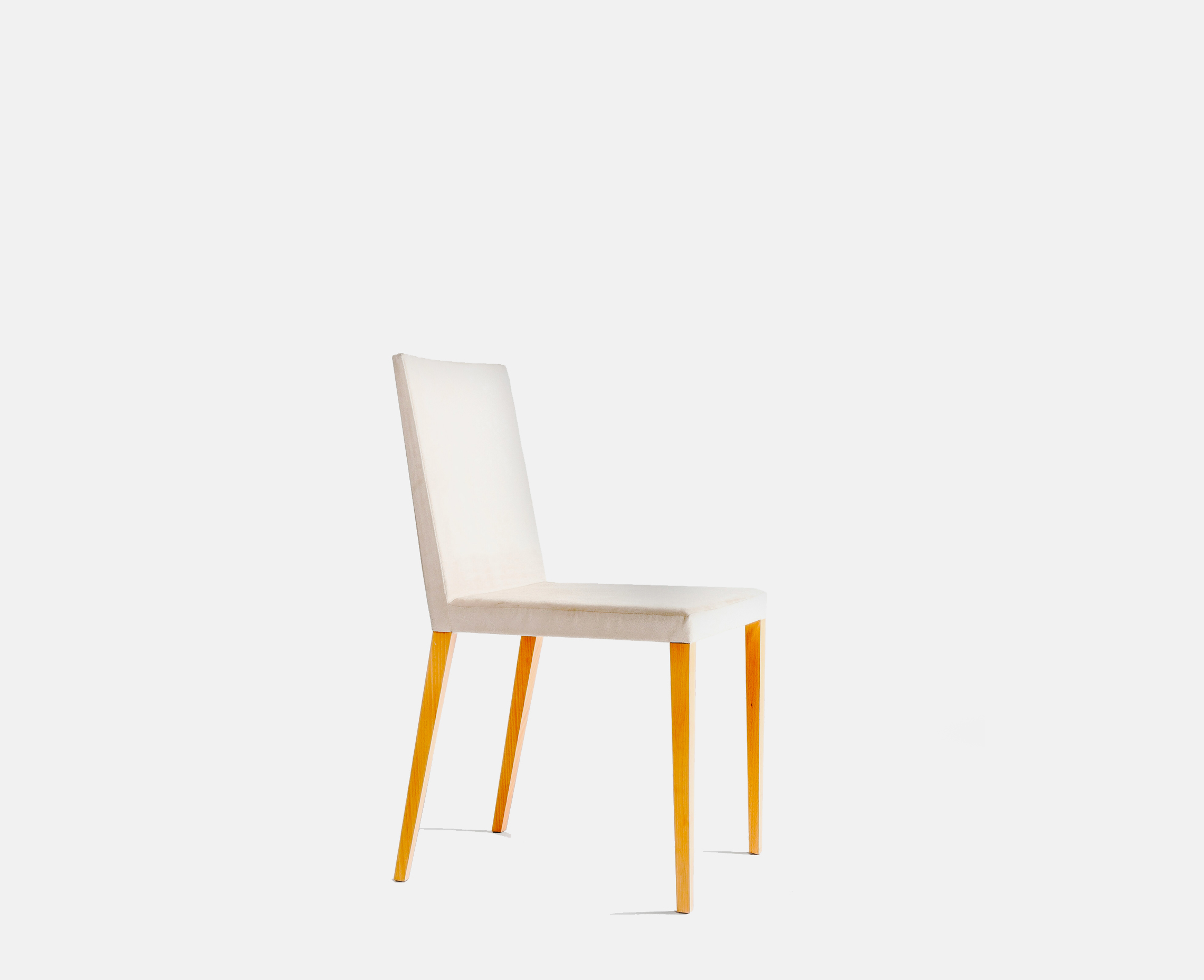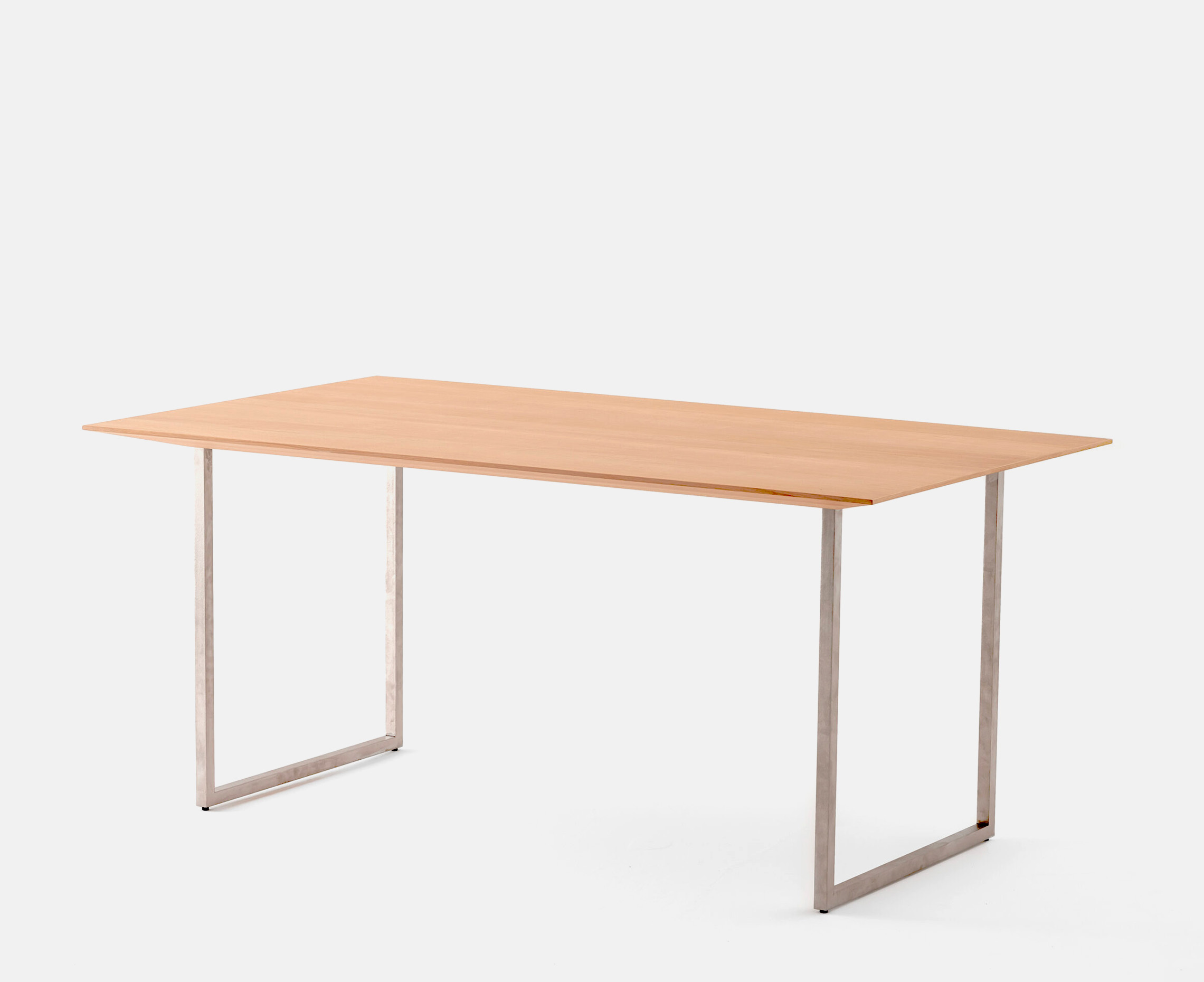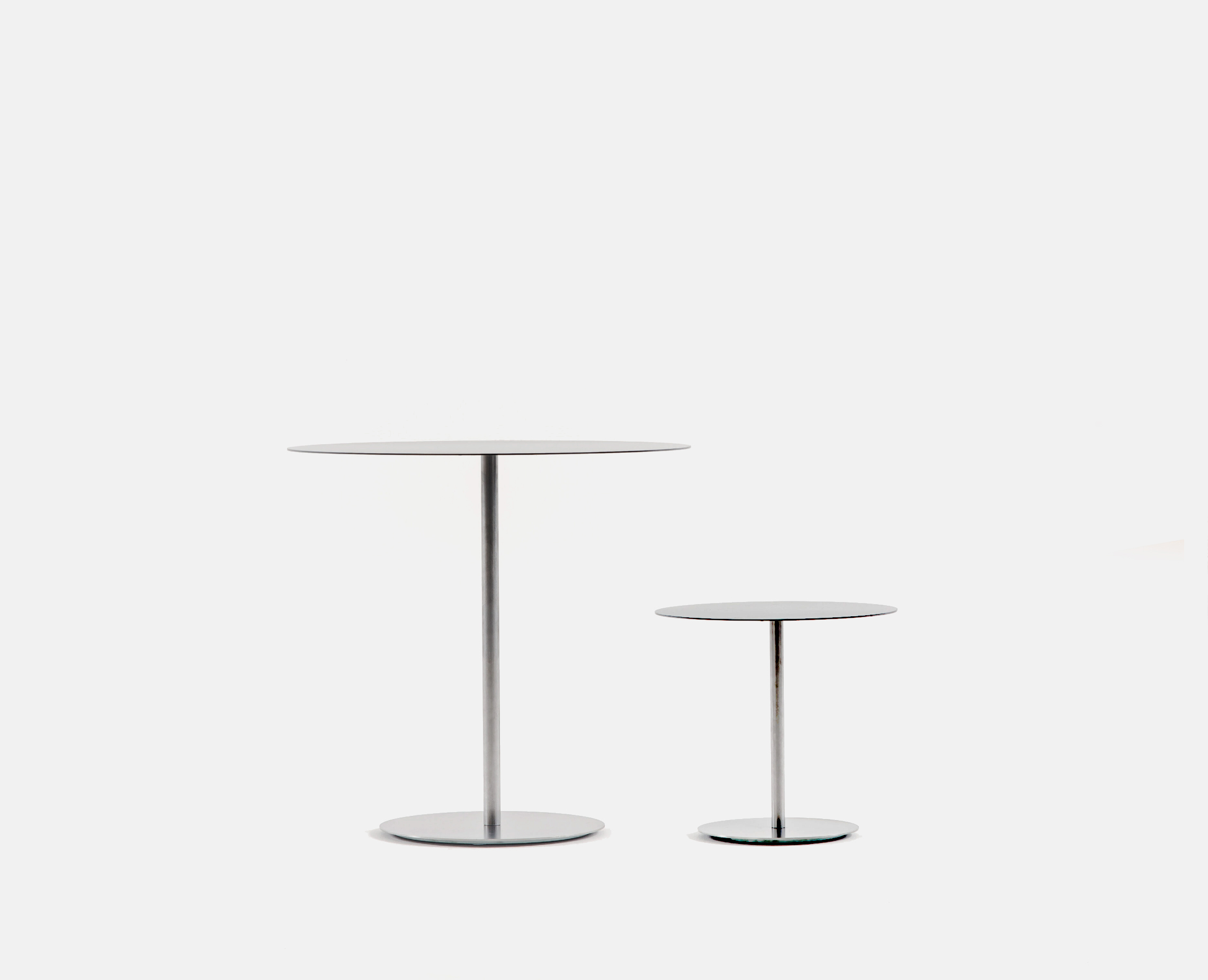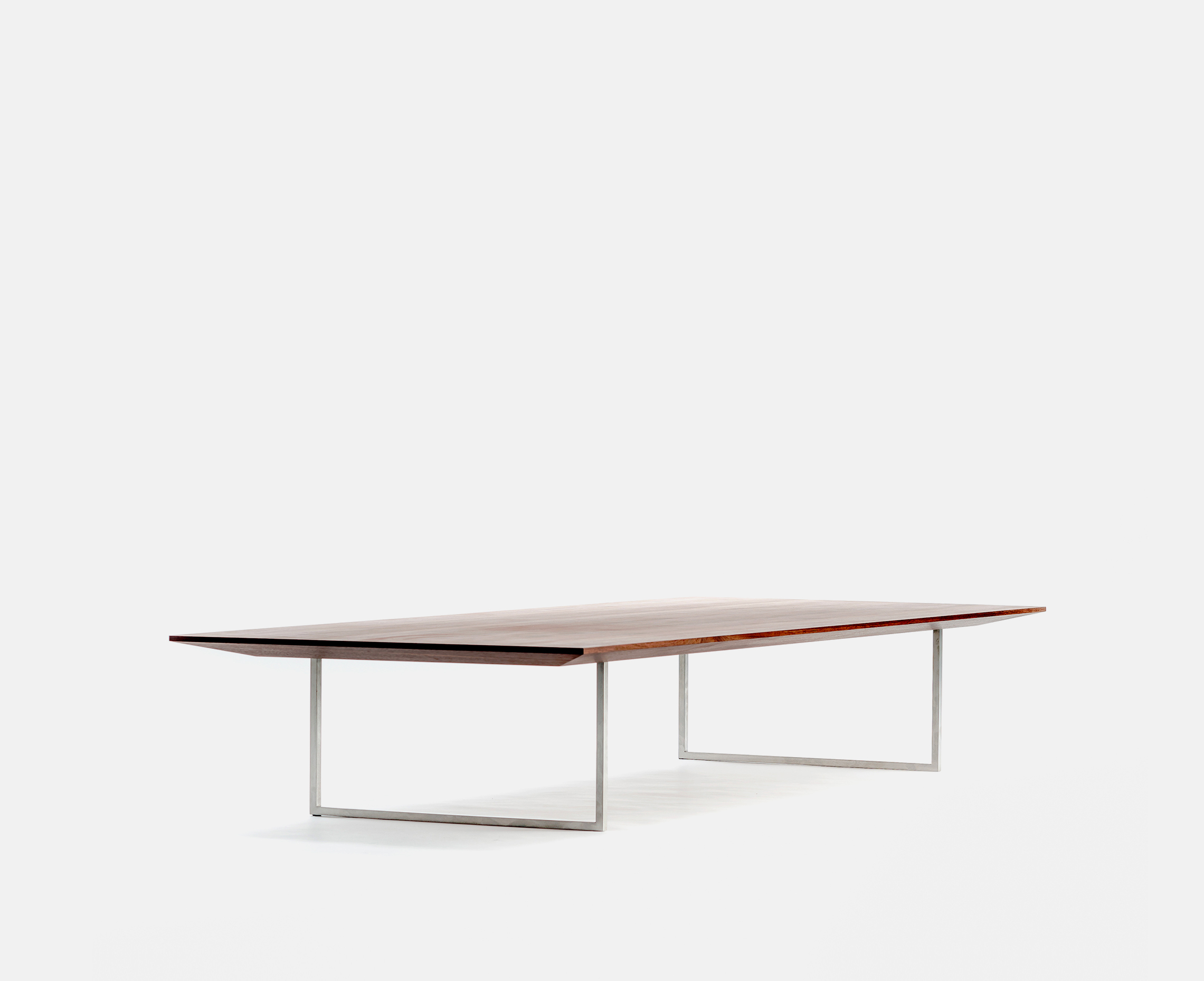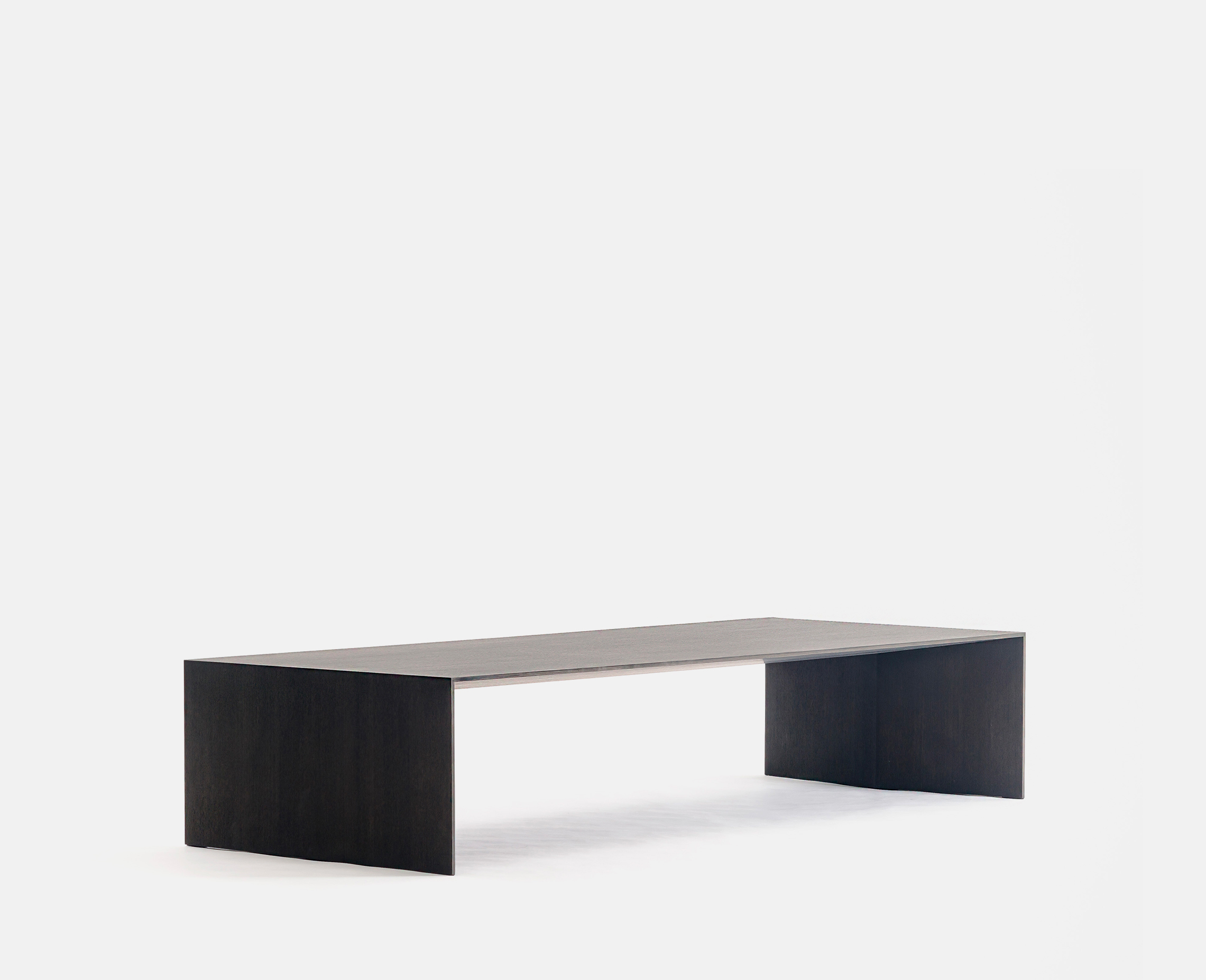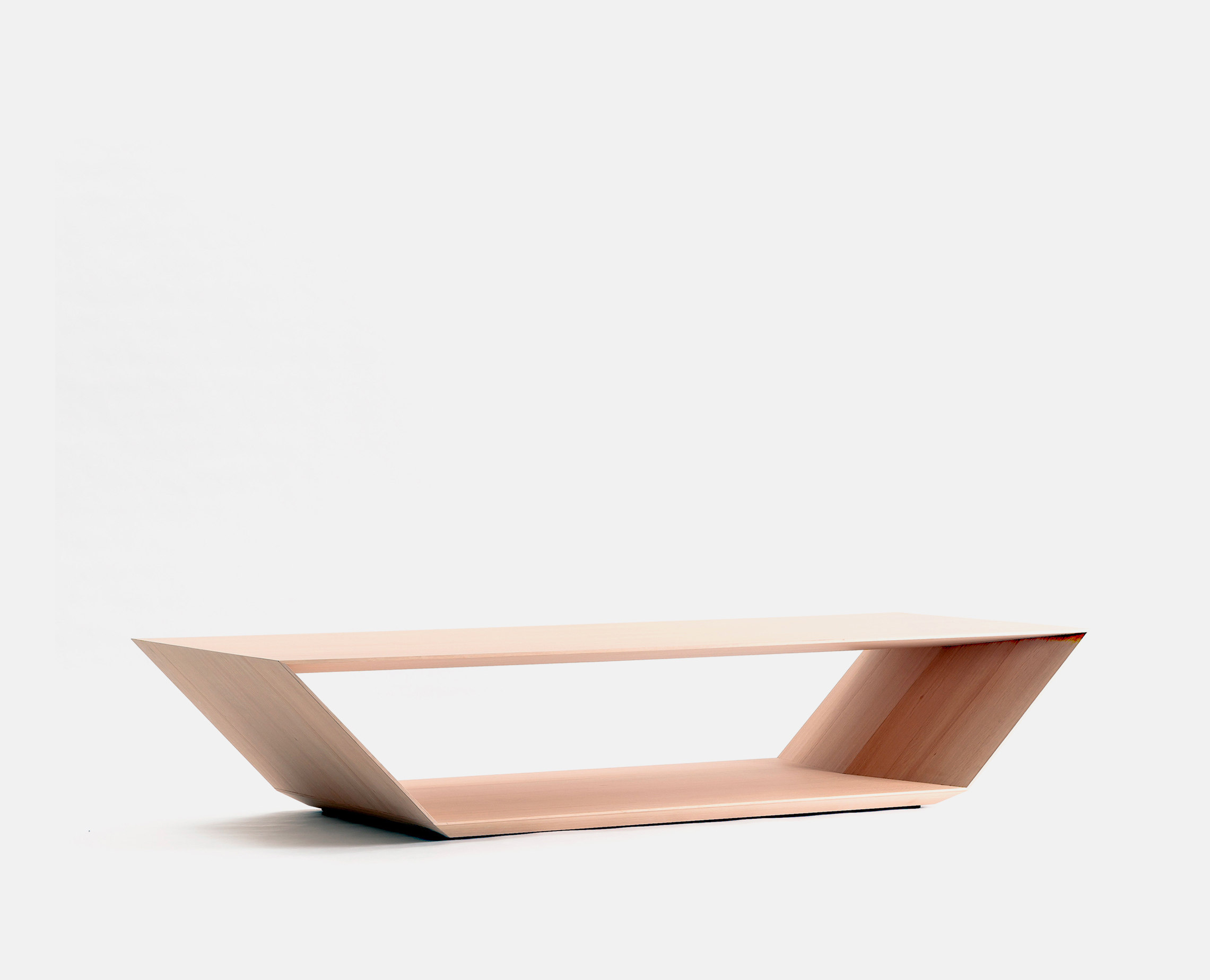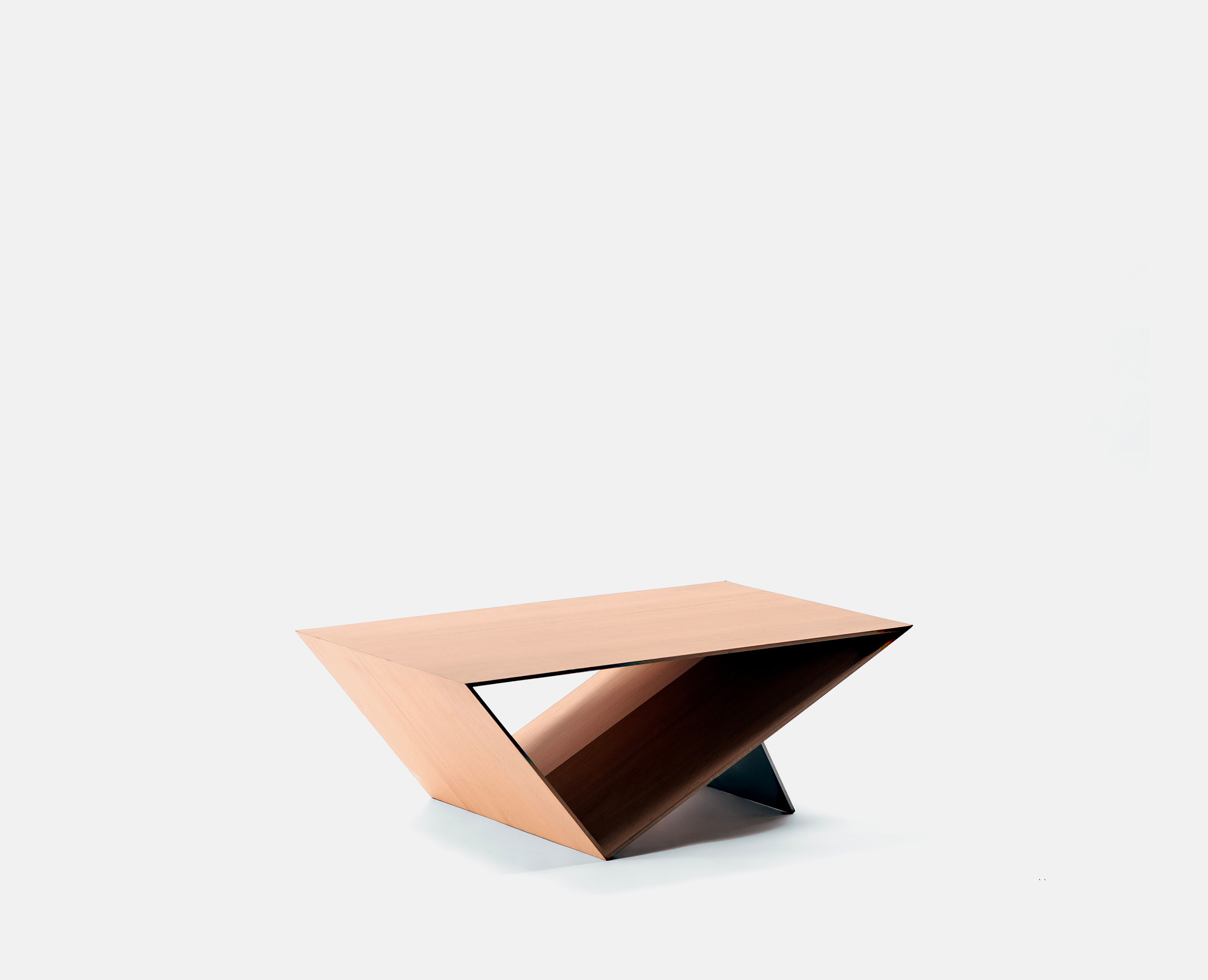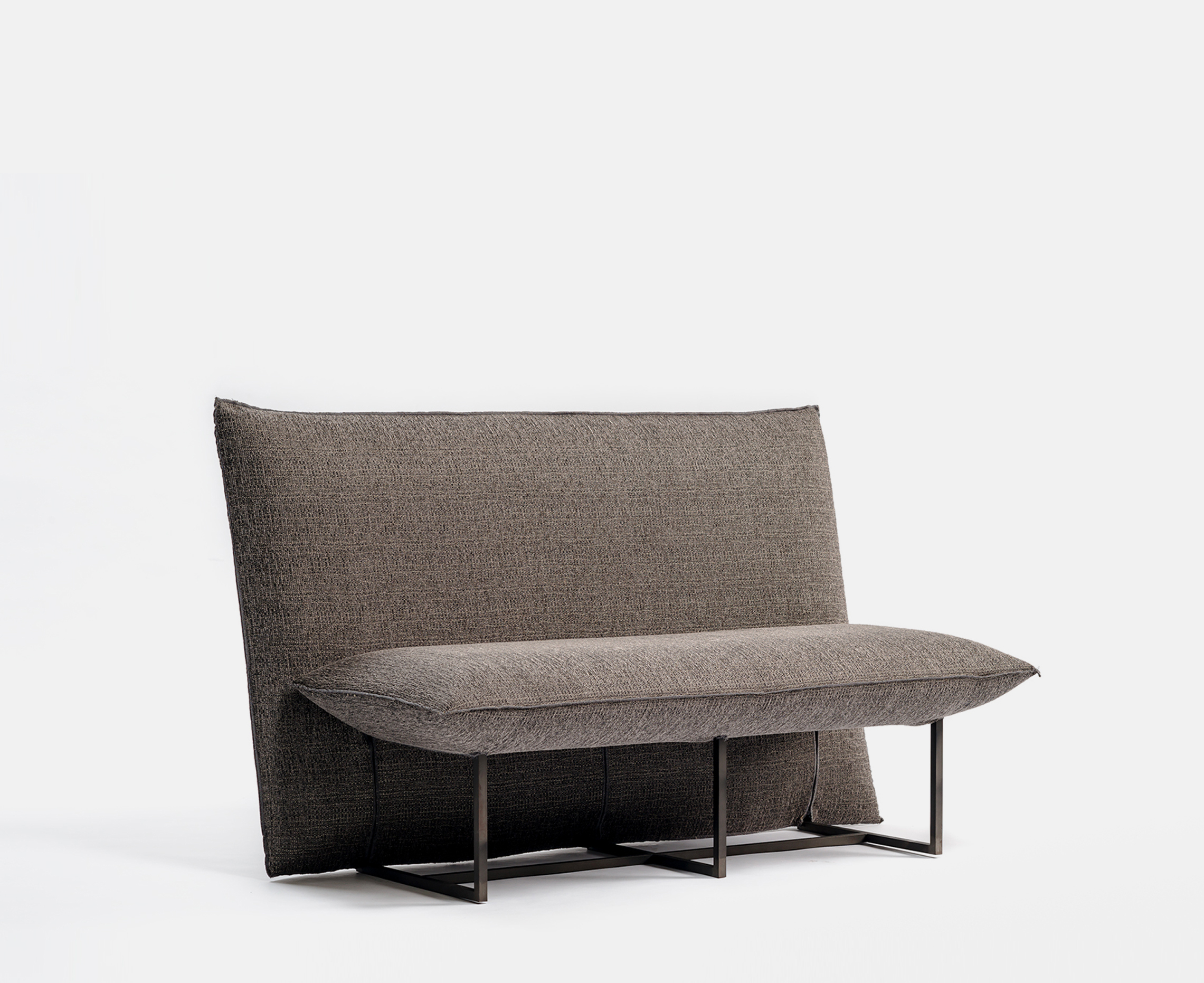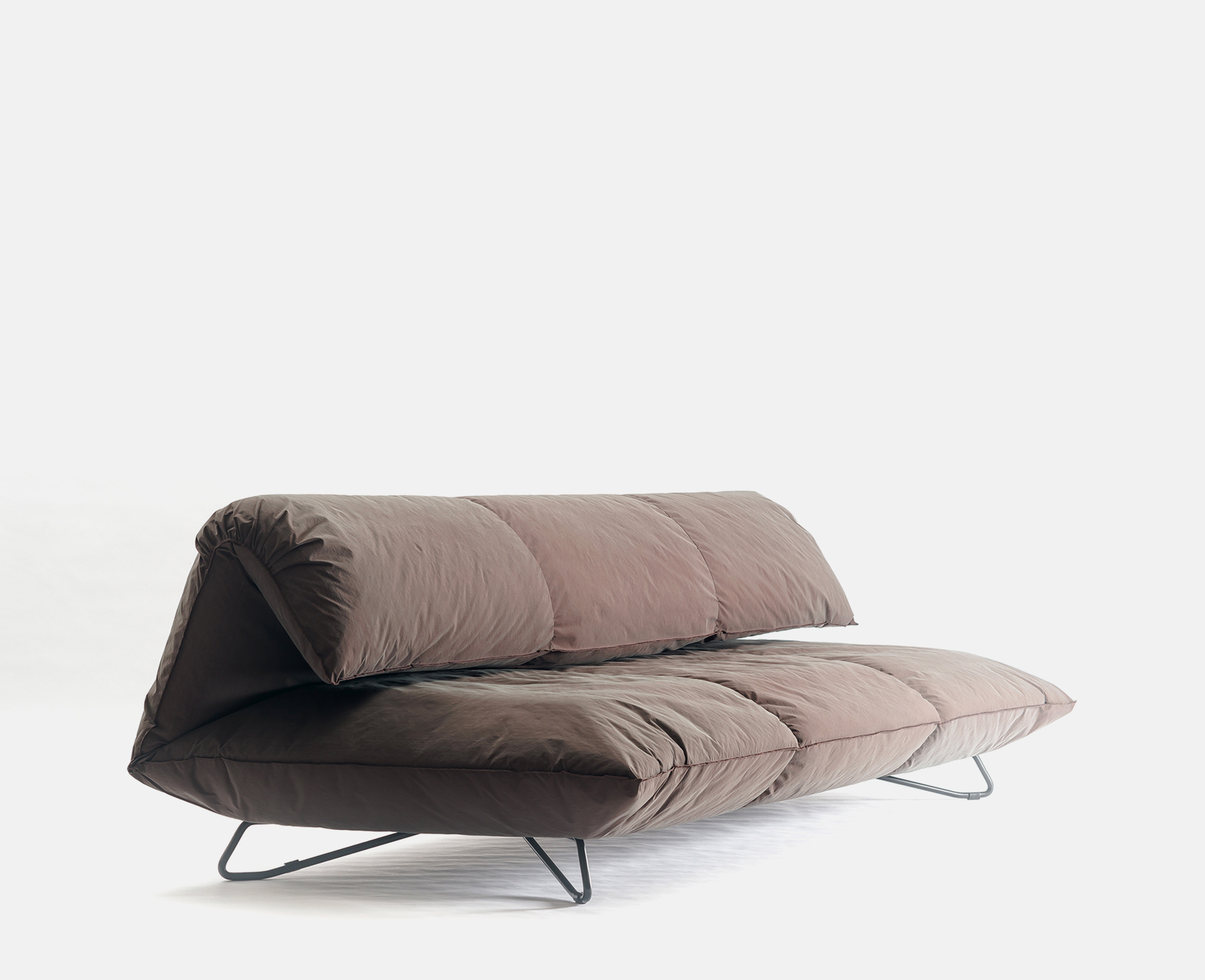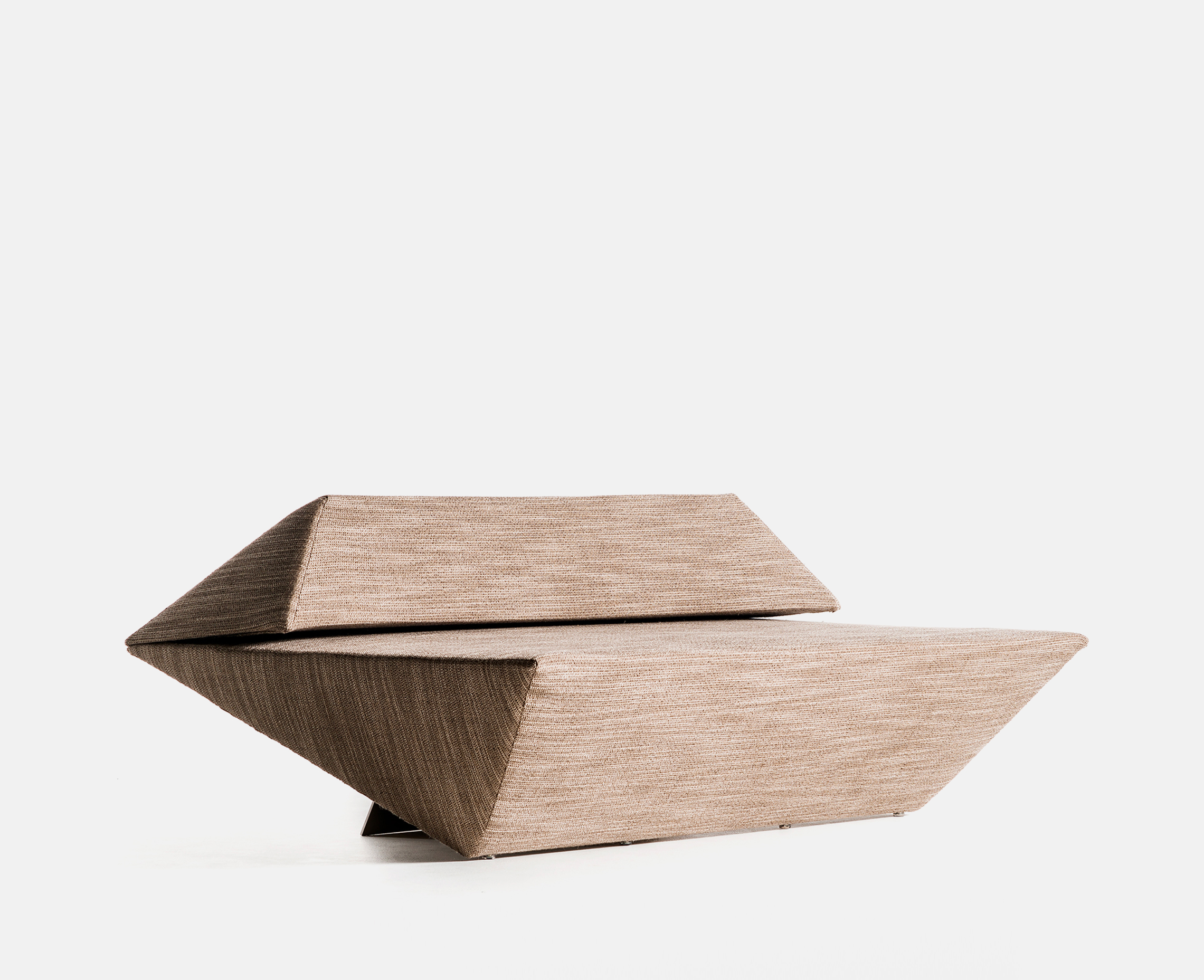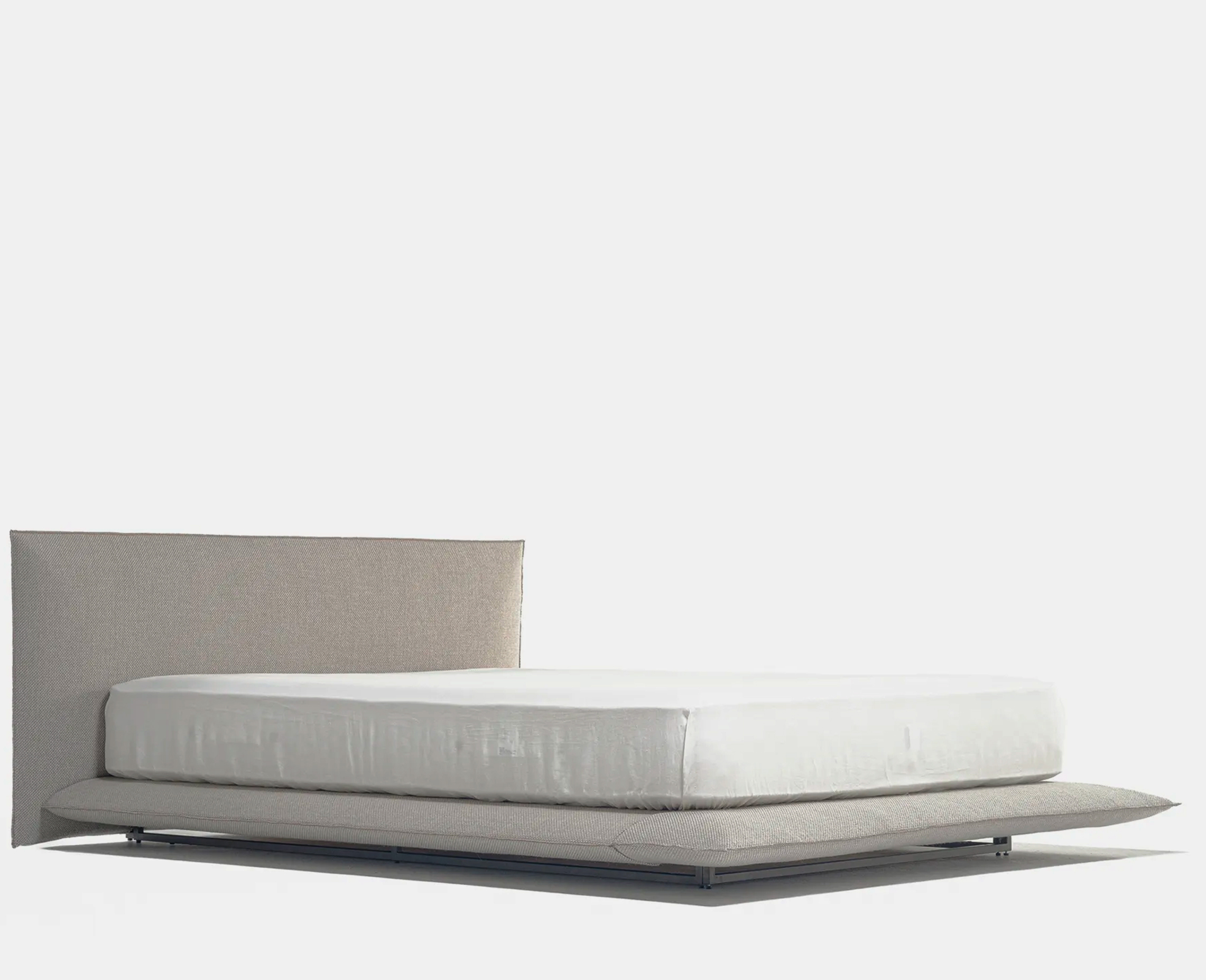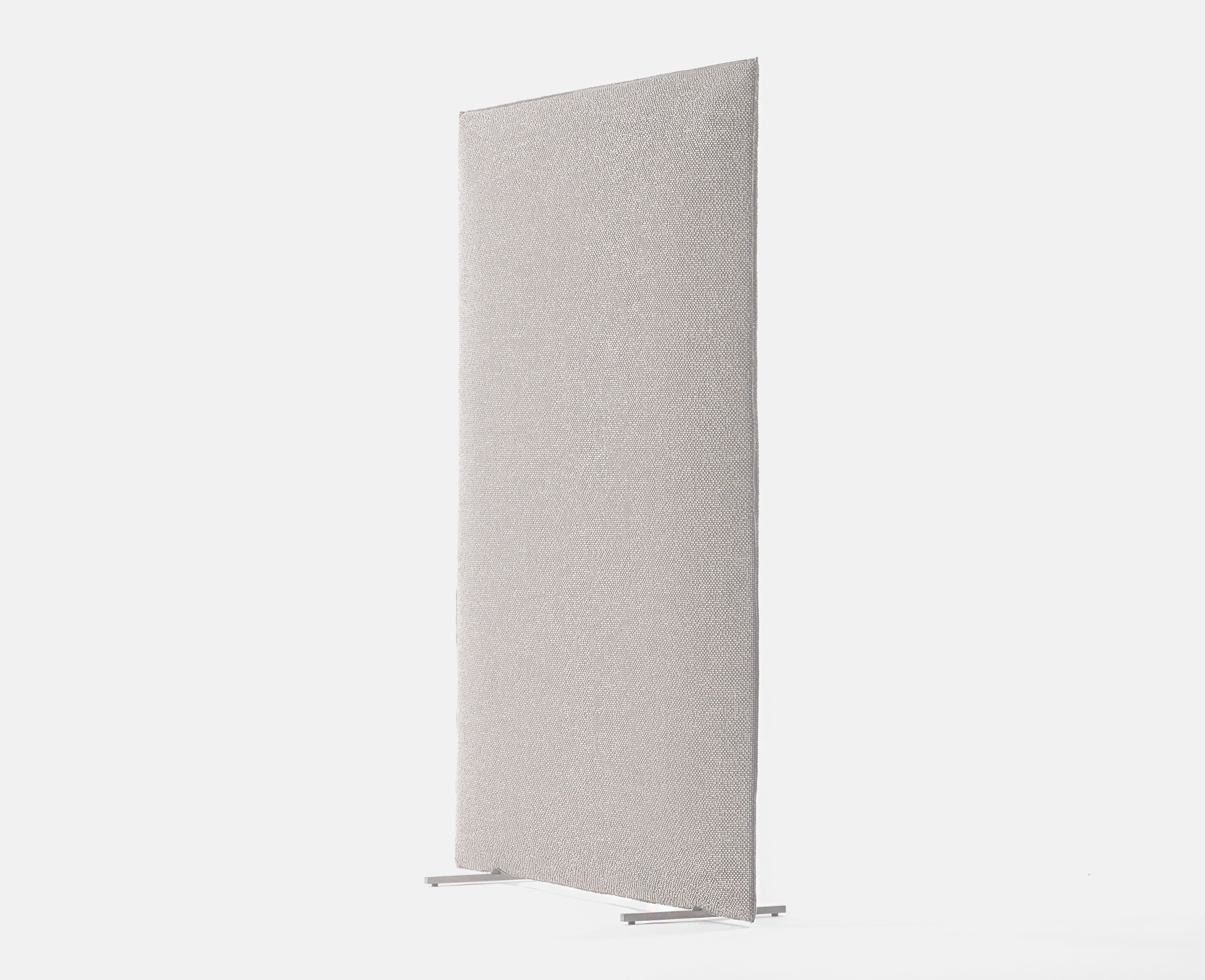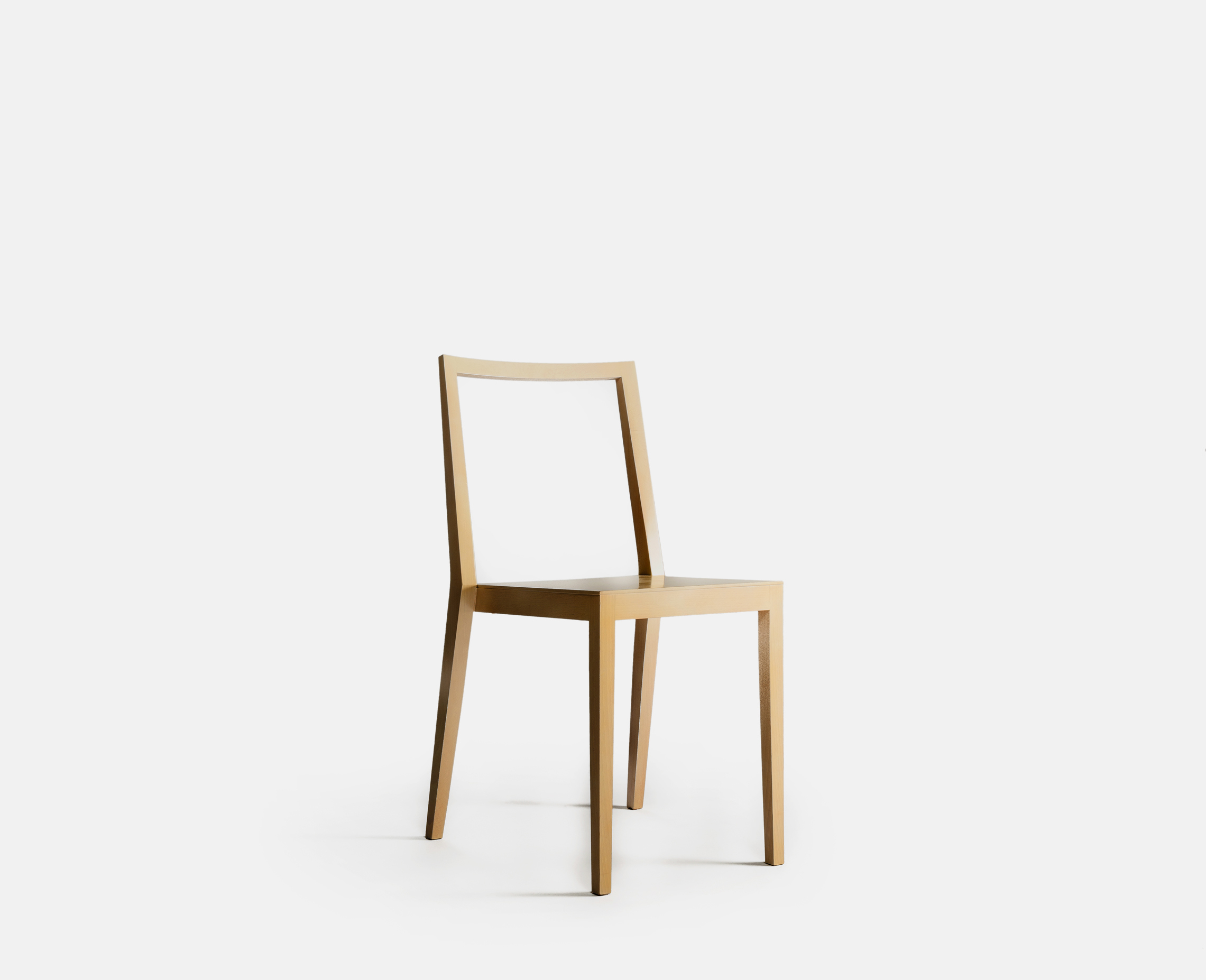
GC
The GC chair was designed for a project of a research centre. The spatial structure and basic design of this lab’s architecture are based on chidori-goshi, a Japanese traditional wooden grid structure. Chidori-goshi is a very complicated method of traditional jointing and is a continuation of joints that combines rectangular timber materials at the intersection of three directions using a traditional woodworking joint technique. The lab’s space is sterically surrounded with chidori-goshi grids. This simple chair has a seat made with wood and the backrest created only with one crest rail. Although the composition is extremely simple, we were required to make it stackable. Simple composition means difficult. A simple design is difficult.
The chair needed to be durable enough, so it could be used for a long time yet keep its structure and design simple. In fact, there are not many durable chairs with a frame this thin. Since the chair was to be made wholly of wood, there could be no metal parts to aid durability. So, we adopted two mortises and tenons at each joint of the rear legs and apron. Although these two mortises and tenons create a complicated structure, its advantage is to secure an area of the joint between each rear leg and apron almost twice as large as a mortise and tenon or dowel joint. As each structural member secures a larger adhesive surface, durability is increased. However, since the structural members we used for the chair were originally thin, to make two mortises and tenons, we needed to shave a lot of parts, which resulted in cutting the wood fibres of the grain that were connected to one another to maintain strength. Thus, the durability depended on the finish of the joint. The GC chair was completed after a number of tests and prototypes, and its durability has been guaranteed. Today, GC chairs can withstand heavy use in places with many people such as hotels or public facilities for a long time.
GC chairs fit very well in the chidori-goshi space due to the harmony found in the texture of their wood. They also look beautiful when stacked.
GCチェアは研究センターのプロジェクトのためにデザインされた椅子です。この研究センターの建築物は、日本の伝統的な千鳥格子が、空間の基本構造となっています。千鳥格子はとても複雑な仕口です。伝統の指物技術によって角材を3方向から交差する点で組み合わせたものを連続させ、立体的にも格子に包まれた空間となっています。
この椅子は座面にも木を使い、背もたれは1本の笠木があるだけの簡潔な、木工だけで出来た椅子です。構成はとてもシンプルですが、スタッキングという機能が求められました。単純な構成の中にこそ難しさが潜んでいます。それが簡潔という意匠の難しさです。できるだけ簡潔な構造と意匠性を保ちながら長期使用に耐えられるだけの強度が求められました。実際にこのような細いフレームで強度が成立している椅子はあまり多く存在しません。椅子の構造も木材だけで構成されている為に金物などの強度を担保するような構造にはできません。そこで後脚と座枠を繋ぐ接合部である仕口に2枚ホゾの構造を取り入れました。この2枚ホゾの利点は複雑な構造にはなりますが、後脚と座枠の仕口の接合面積が1枚ホゾやダボ組の2倍近い接合面が確保できる点にあります。それぞれの部材が多くの接着面を確保する程に強度は高くなります。しかし、元々が細い部材を使っている為に2枚ホゾにすることで多くの削りが必要になり繋がって強度を持たせている木目の繊維を切ってしまうことにもなり、その仕口の作りが強度を左右することになりました。何度も検証と試作を繰り返し完成したGCチェアの強度はしっかりと担保されています。今ではホテルや公共施設などでハードユースされるような現場でもGCチェアは長年の使用に耐え、活躍しています。千鳥格子の空間の中にあるGCチェアは、木部の質感が同調しとても良く空間に馴染んでいます。スタッキングした姿も美しい椅子になりました。
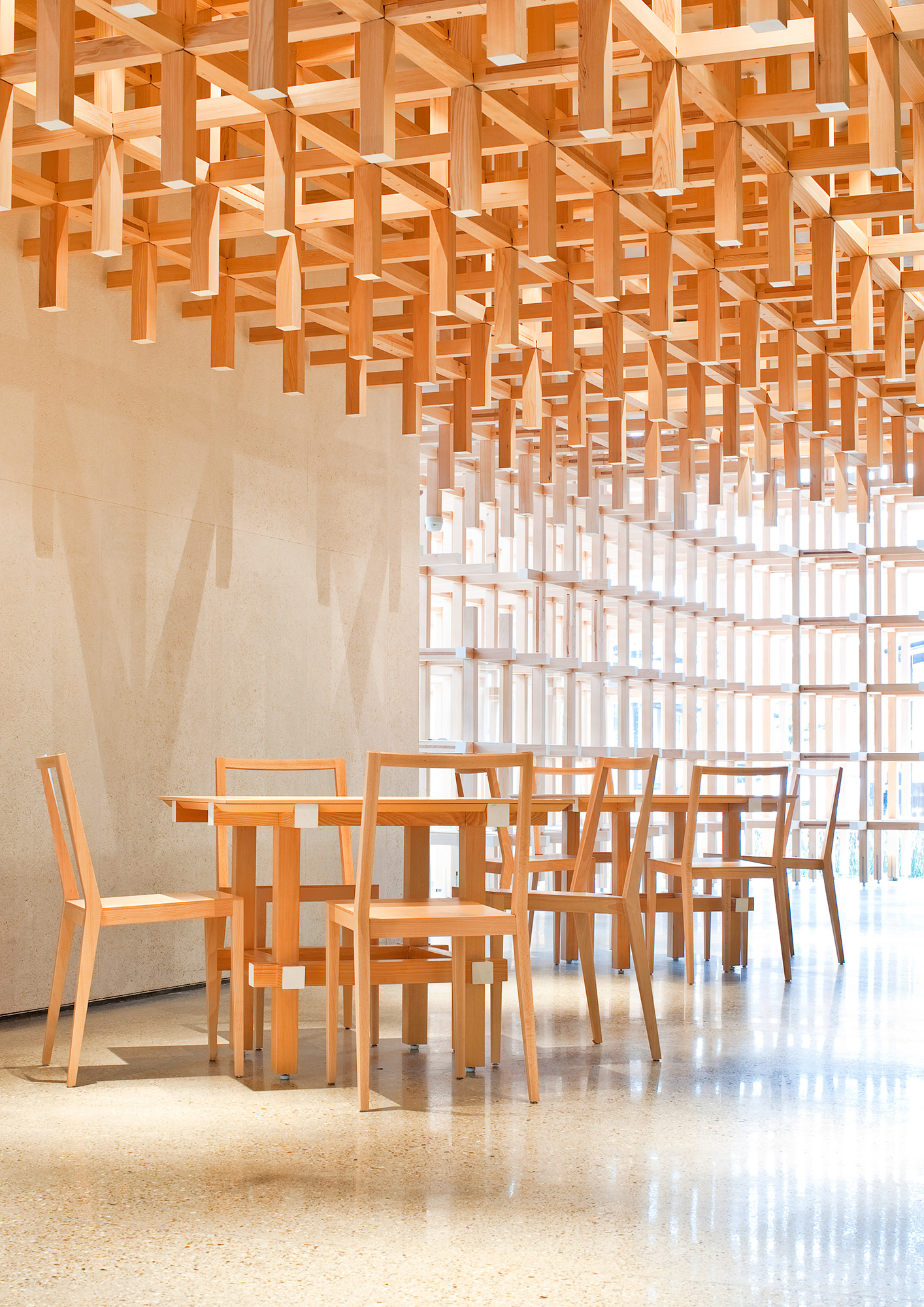
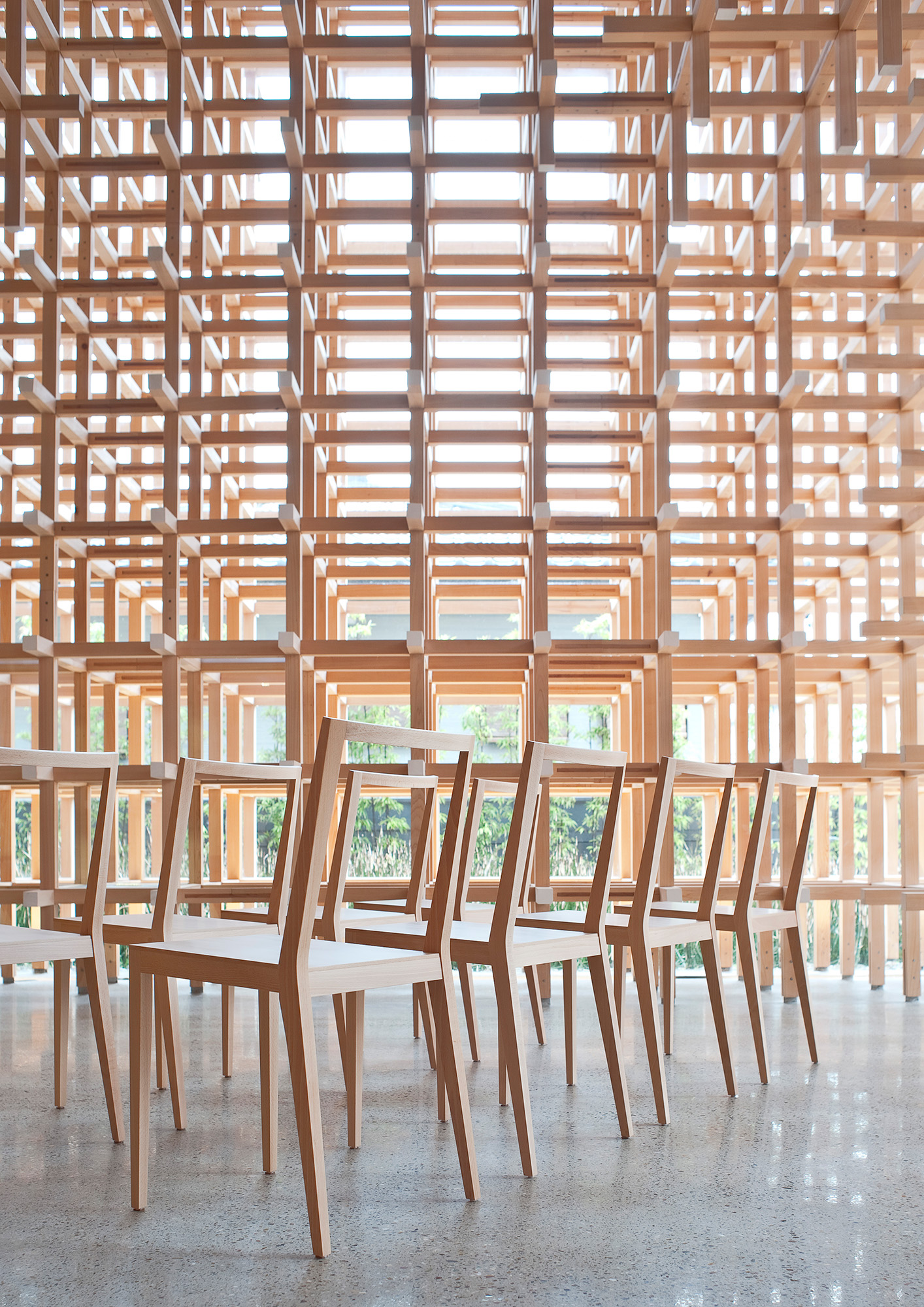
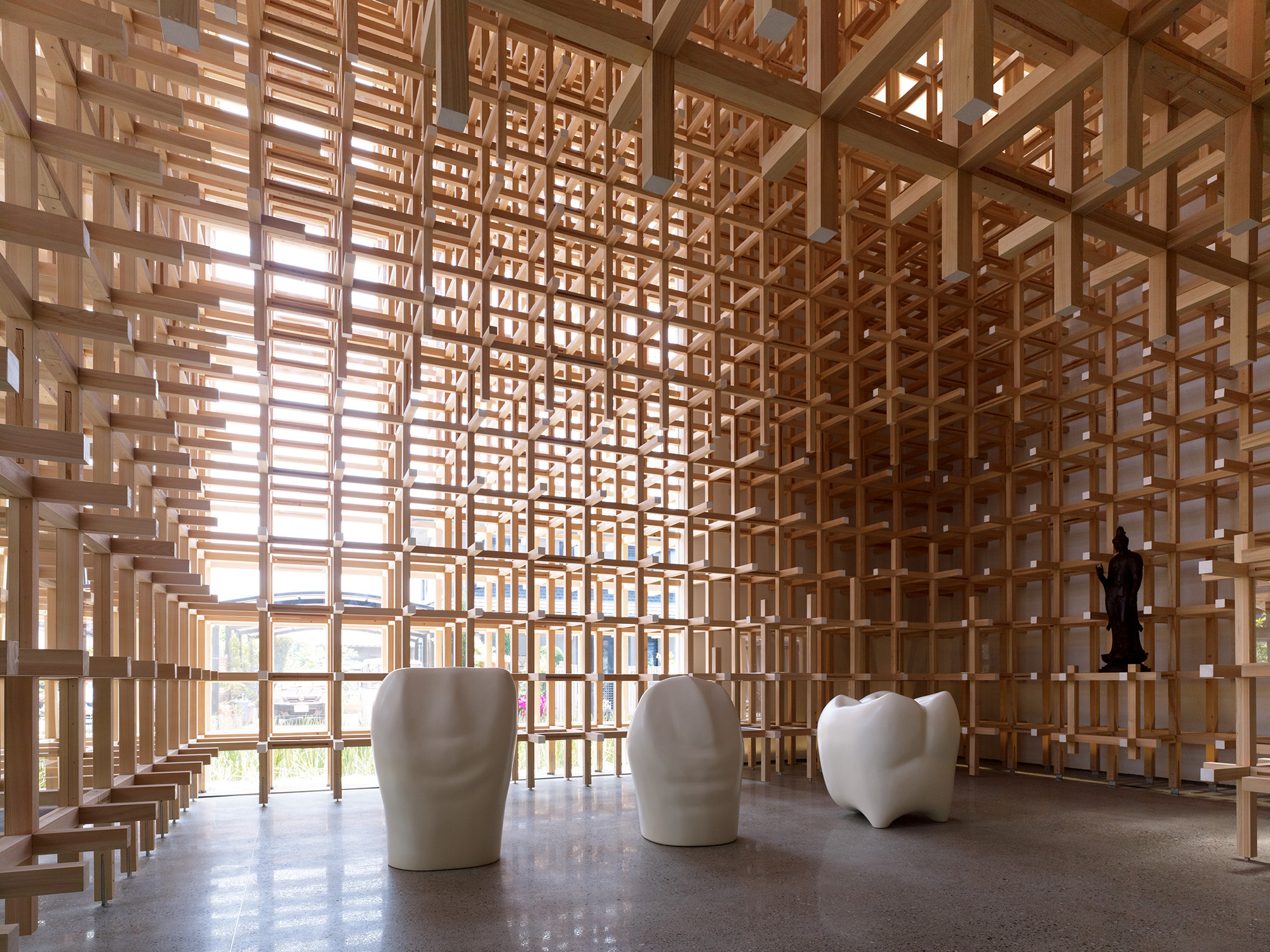
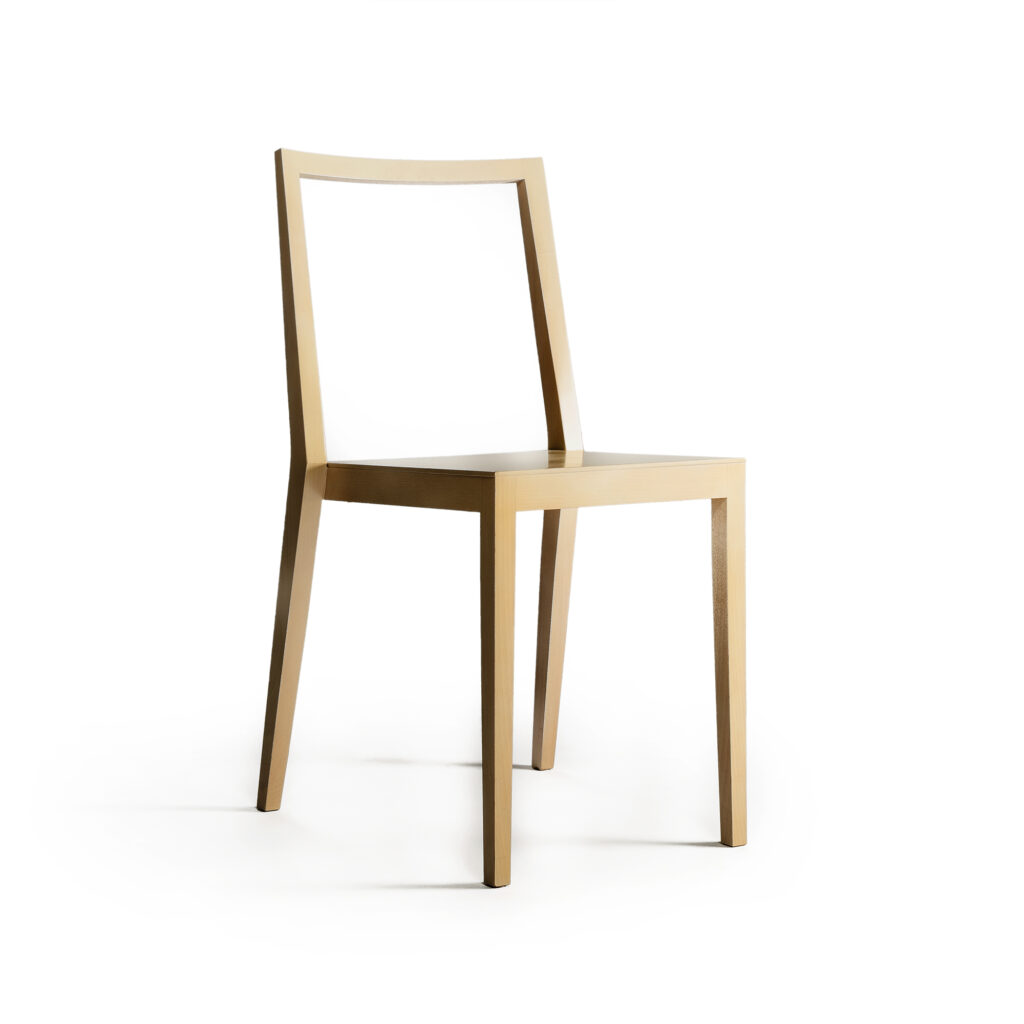
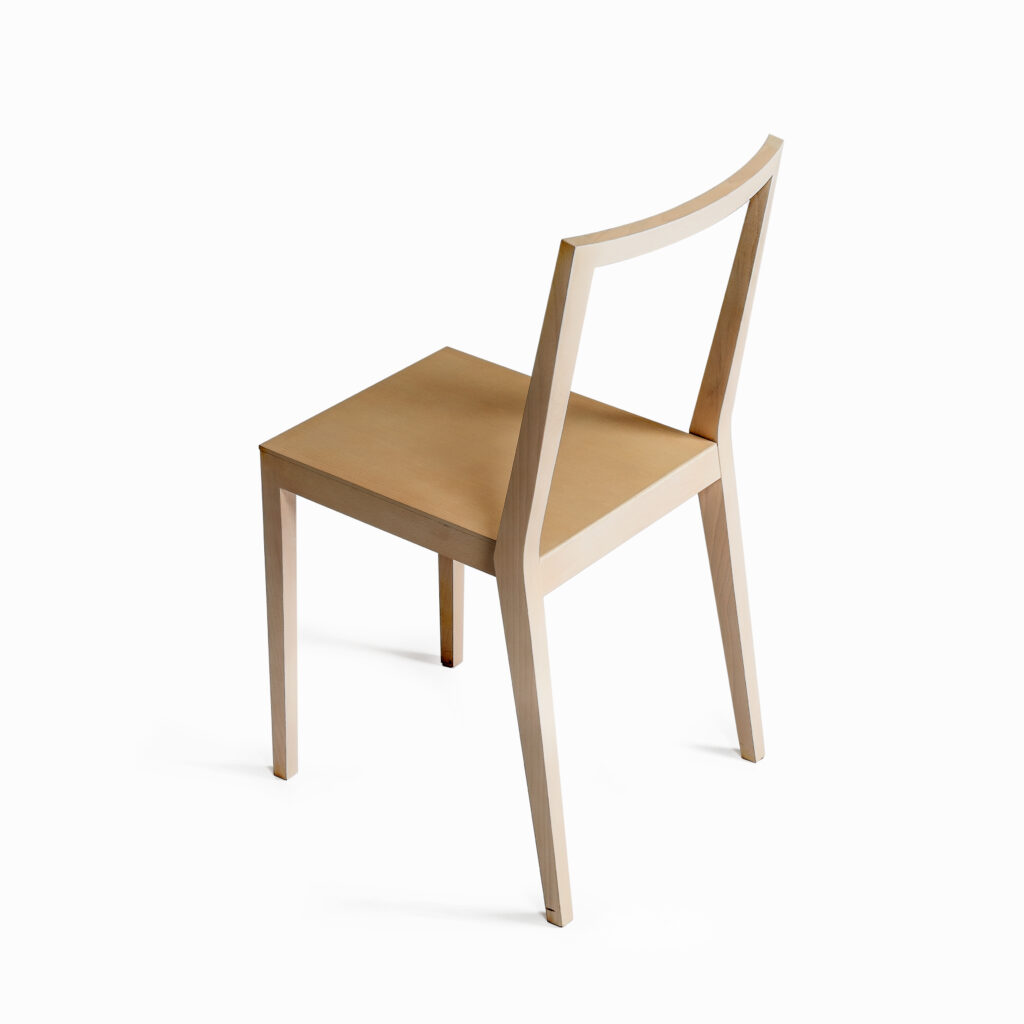
Kengo Kuma collection
© Copyright PRESTIGE JAPAN INC. ALL rights reserved.
